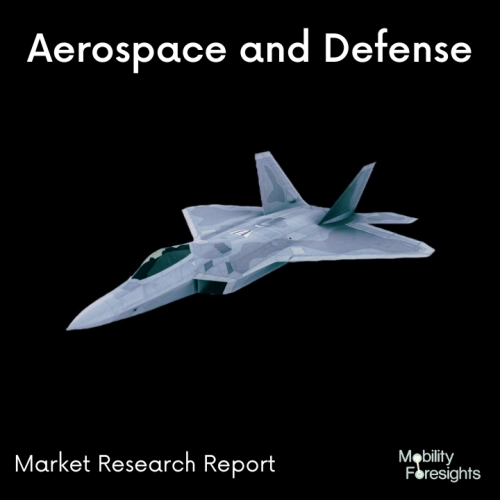
- Get in Touch with Us

Last Updated: Apr 25, 2025 | Study Period: 2023-2030
Unmanned aerial vehicles (UAVs) and drones may securely integrate into civilian airspace by using technologies called sense and avoid (SAA) or detect and avoid (DAA) systems to prevent accidents with other aircraft, buildings, power lines, birds, and other objects.
Inertial measurement units (IMUs), which combine data from several sensors including gyroscopes, accelerometers, and magnetometers to generate readings that may be used to compute the orientation and velocity of the drone, are also a part of UAV sensors.
Unmanned aerial vehicles (UAVs) are a kind of aircraft that have the ability to fly without a pilot present [WAT 12]. Sensor payloads, a ground control station, and the aircraft itself make up unmanned aircraft system.
UAV, or drones, have a wide range of uses in the military, construction, picture and video mapping, medicine, search and rescue, parcel delivery, hidden area exploration, oil rig and power line monitoring, precision farming, and wireless communication.
Power usage and consumption are significant factors with drones. Current sensors can be used to monitor and optimise power consumption, ensure that internal batteries are charged safely, and identify motor or other system failure conditions.
These systems include the sense function, which aims to perform detection and tracking of nearby traffic, and the avoid function, which aims to provide early identification of potential conflicts (such as loss of separation and collision threats) and to elaborate suitable manoeuvres to be carried out by the UAV in.

The Global UAV Sense-and-Avoid System Market accounted for $XX Billion in 2022 and is anticipated to reach $XX Billion by 2030, registering a CAGR of XX% from 2023 to 2030.
Launch of the 360-Degree Detect-and-Avoid System for Drones.
In order to allow commercial Beyond Visual Line of Sight (BVLOS) operations, Iris Automation has introduced Casia 360, the company's new onboard detect-and-avoid (DAA) solution for unmanned aerial systems (UAS). Casia 360 has a 360-degree radial field of vision.
In order to provide a sense-and-avoid capability, the Casia system combines both hardware and software. It can identify other aircraft from all angles, classify them using sophisticated computer vision algorithms, determine their threat level, and, if necessary, alert the pilot and initiate automated manoeuvres to safely avoid collisions.
The low-SWaP (size, weight, and power) device has two onboard controllers, five long-range optical cameras with a 360-degree field of view, and is built around a self-contained embedded supercomputer running powerful machine-vision algorithms.
With over 12,000 real-world interactions and more than 50,000 simulated contacts, Casia has undergone rigorous testing with real-world test flights and mid-air collision scenarios involving different manned aircraft against UAS. The system has BVLOS licences from regulators in the United States, South Africa, and Canada and is presently being used by dozens of clients across 12 countries.
"Casia 360 enables a drone to have a comprehensive feel of its surroundings so it can avoid possible accidents from any direction," said Iris Automation's CEO. Based on input from our clients and international regulatory agencies, we created this technology.
It makes it possible for drones to be utilised for a wider variety of long-distance use cases, saves money, improves safety, and opens up new opportunities across several sectors.
| Sl no | Topic |
| 1 | Market Segmentation |
| 2 | Scope of the report |
| 3 | Abbreviations |
| 4 | Research Methodology |
| 5 | Executive Summary |
| 6 | Introduction |
| 7 | Insights from Industry stakeholders |
| 8 | Cost breakdown of Product by sub-components and average profit margin |
| 9 | Disruptive innovation in the Industry |
| 10 | Technology trends in the Industry |
| 11 | Consumer trends in the industry |
| 12 | Recent Production Milestones |
| 13 | Component Manufacturing in US, EU and China |
| 14 | COVID-19 impact on overall market |
| 15 | COVID-19 impact on Production of components |
| 16 | COVID-19 impact on Point of sale |
| 17 | Market Segmentation, Dynamics and Forecast by Geography, 2023-2030 |
| 18 | Market Segmentation, Dynamics and Forecast by Product Type, 2023-2030 |
| 19 | Market Segmentation, Dynamics and Forecast by Application, 2023-2030 |
| 20 | Market Segmentation, Dynamics and Forecast by End use, 2023-2030 |
| 21 | Product installation rate by OEM, 2023 |
| 22 | Incline/Decline in Average B-2-B selling price in past 5 years |
| 23 | Competition from substitute products |
| 24 | Gross margin and average profitability of suppliers |
| 25 | New product development in past 12 months |
| 26 | M&A in past 12 months |
| 27 | Growth strategy of leading players |
| 28 | Market share of vendors, 2023 |
| 29 | Company Profiles |
| 30 | Unmet needs and opportunity for new suppliers |
| 31 | Conclusion |
| 32 | Appendix |